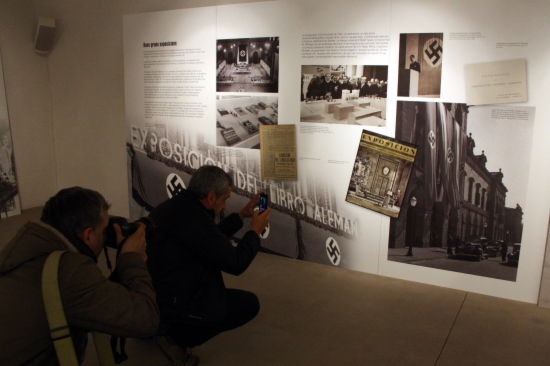Entrance to Montjuïc Castle and exhibitions now costs €5
From this Monday onwards, visiting the fortress at the top of Barcelona’s Montjuïc hill will cost €5. Special discounts will be available as well as free admissions on special days, like the other museums in the city. Within Montjuïc Castle, history-related exhibitions will be held. Visitors can currently discover the exhibition ‘Postwar Barcelona’, organised by the City Council’s Archives with the collaboration of the Carles Pi i Sunyer Foundation. The exhibition starts with Franco’s troops entering the city on the 26th of January 1939 and finishes with the end of term of Fascist Mayor Miquel Mateu i Pla in 1945. In fact, it is a time travel back to post Civil War Barcelona, displaying more than 250 documents, including illustrations and photos, as well as historical texts and articles.

Barcelona (ACN).- From this Monday onwards, visiting the fortress at the top of Barcelona’s Montjuïc hill will cost €5. Special discounts will be available as well as free admissions on special days, like the other museums in the city. Within Montjuïc Castle, history-related exhibitions will be held. Visitors can currently discover the exhibition ‘Postwar Barcelona’, organised by the City Council’s Archives with the collaboration of the Carles Pi i Sunyer Foundation. The exhibition starts with Franco’s troops entering the city on the 26th of January 1939 and finishes with the end of term of Fascist Mayor Miquel Mateu i Pla in 1945. In fact, it is a time travel back to post Civil War Barcelona, displaying more than 250 documents, including illustrations and photos, as well as historical texts and articles.
On Monday, Montjuïc Castle further continued on its new path as a cultural centre. This new era started in 2008, when the Spanish Defence Ministry handed transferred the property to the City Council of Barcelona. This year and the next, the Town Hall will invest a total of €9 million to continue improving the venue. In addition, it has transferred the cultural management of the centre, via a public tender, to company Magma Cultura. The entrance to the site is no longer free and will now cost €5, with various discounts available for Barcelona residents. The fees will be collected by the City Council and will be used to maintain the fortress and its surroundings, as well as to organise cultural exhibitions and events.
An exhibition about the early stages of Fascism in Barcelona
‘Barcelona Postwar’ is the first Montjuïc Castle exhibition visitors will have to pay €5 to access. Among the most striking pictures displayed are the official unveiling of a plaque celebrating Franco’s victory in the Spanish Civil War on the wall of the Town Hall; the Italian Fascist Count Ciano being welcomed on his arrival at the Port of Barcelona; and Nazi leader Heinrich Himmler presiding over the military parade organised in his honour in the city.
Joaquim Borràs, the Director of the Municipal Archives, said that all 250 documents have in common “very powerful” graphical elements referring to the 1939-1945 period. The exhibition is divided into six sections: Fall, occupation and repression; Power and management of the city; The ‘new’ friends: Nazis and Fascists; The ‘new ' Barcelona; A city subjected to Franco and National-Catholicism; and, Daily life: between luxury and misery. Among these sections are three underlying axis: the Hispanisation of citizens, the establishment of a Spanish Fascism and the radical Catholic indoctrination.
These unpublished documents were the ones retained by the selective fascist City Council
The research and investigations of the Carles Pi i Sunyer Foundation has enabled to disseminate unpublished documents preserved in Barcelona’s Municipal Archives . Borràs said that it was the first time so many of these documents were gathered in a single exhibition, “documents that are original and in part unpublished and can be seen for the very first time”, in his words.
For his part , the Director of the Carles Pi i Sunyer Foundation, Francesc Vilanova, said they have tried to rebuild some of the fundamental features of daily life in post-war Barcelona since it fell to Franco’s army on the 26th of January 1939. “What we have here is a very significant part of the city’s history in post-war times, but unlike other Fascist dictatorships of the time like in Germany, Franco’s Regime was more discreet” in terms of the number of images available, he explained. In this respect, Vilanova stressed that such images are the ones the City Council retained from the year 1939 onwards. “It means we will see certain images and not others because they are not there”, he concluded.